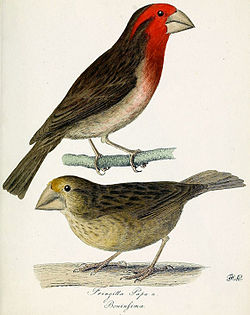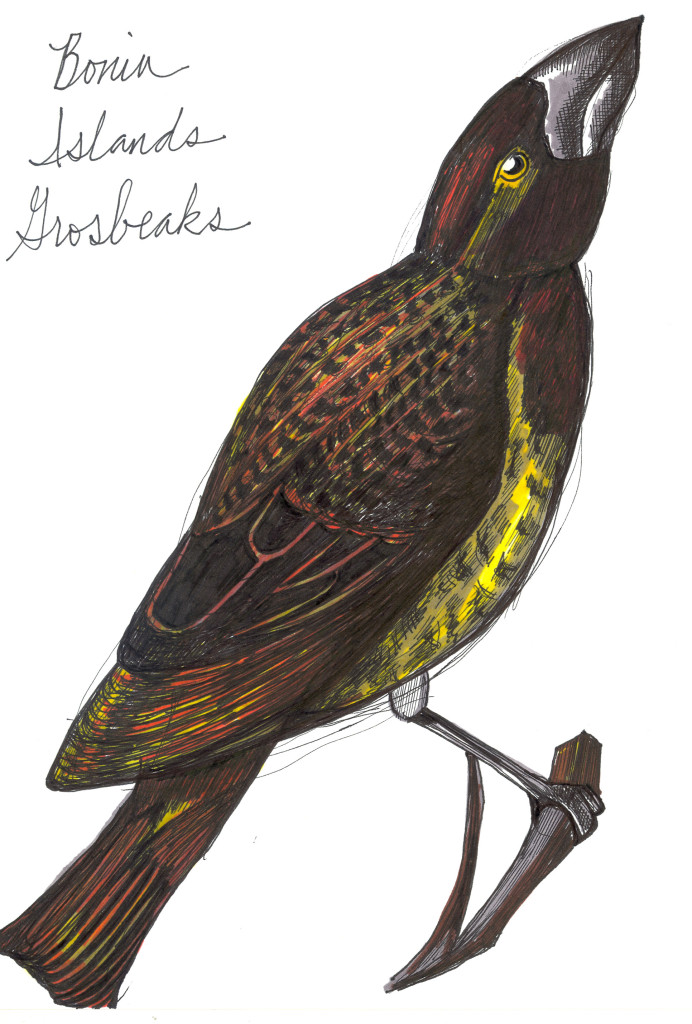Back to birds! Bonin Island Grosbeaks were technically not Grosbeaks, and technically only found on one of the Bonin Islands, (though maybe at one point it had lived on more than one). So let’s start at the beginning:
1. Where are the Bonin Islands?
The Bonin Islands are also known as the Ogasawara Islands, and are an archipelago of over 30 subtropical and tropical islands, some 1,000 kilometers directly south of Tokyo, Japan. Bonin is the English name for the archipelago, derived from an archaic Japanese word for “uninhabited”. Which these islands, for the most part, are. The exception is the island Chichi-jima, the largest, which was the home, when it was alive, of the Bonin Island Grosbeak.
2. What do you mean, not a grosbeak? Why’s it called a grosbeak, if it isn’t one? Beats me. It’s used sometimes as more of a vernacular word for various finches with a big beak, instead of as the name of a specific species. The beak in question for all these birds is large and powerful, and was useful for beating open the shells of seeds.
3. Why is it extinct? Well, it liked to stay on the ground, looking for seeds to eat, and wasn’t so into flying or perching in trees. Ground dwelling birds are generally much more vulnerable to predators. It also lived mostly on one island, and one island alone. That right there is a recipe for evolutionary disaster. The smaller and more specific your habitat is, the more likely you are going to disappear.
Which is what happened to the Bonin Island Grosbeak. Whalers in the nineteenth century used the island as a stopping point, introducing rats, goats, sheep, dogs, and cats, all new predators to the island in the process, and cleared some of the island for settlement. The combination of habitat loss and a whole bunch of new animals running around their island home looking for something to eat did in the bird.
But before it disappeared, several people decided to draw it; here’s a sampling of various images of the bird:

Bonin Grosbeaks by F.H. von Kittlitz, 1828 (wikipedia)

Depiction from ‘The zoology of Captain Beechey’s voyage; comp. from the collections and notes made by Captain Beechey, the officers and naturalist of the expedition, during a voyage to the Pacific and Behring’s Straits performed in His Majesty’s ship Blossom. London, H. G. Bohn, 1839’

Specimens from the National Museum of Natural History, Leiden, the Netherlands , via the Oriental Bird Club Image Database.

